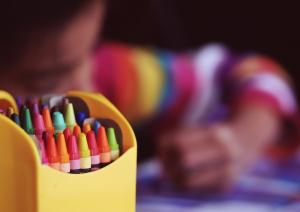How To Build Confidence in Early Years Writing
E.B. White, author of Charlotte’s Web, stated that we should “always be on the lookout for the presence of wonder.” This rings true throughout much of teaching, and particularly when inspiring children to take their first steps as an emerging writer.
The early years foundation stage (EYFS) is a pivotal time in the development of a child’s literacy. Their motor skills which underpin their ability to write by hand are beginning to form, with everything from spilled drinks to leftover parcel packaging becoming tools for self-expression.
From shapes that resemble letters, to random letters which resemble a word, children are making their first marks.
As a teacher, you know how vastly children differ when it comes to picking up critical skills – and a catch-all approach rarely works. When building confidence in early years writing, your own experience will no doubt lead you to pick up cues regarding an individual child’s interest, and how best to nurture these skills; furthermore, there are some excellent strategies to compliment your own observations and time-honoured practice.
Young children should be free to experiment and create their own visualisations.
With support from teachers and guardians, children who are mark making within their environment should be encouraged to keep trying new things, purely to see what happens.
Whether this is spreading water with paintbrushes outside, or using crayons on scrap paper, these child-led activities are not without meaning; these creations are often the first motion of storytelling.
For teachers, it’s more important to offer encouragement than focus on accuracy. Before the age of six, particularly, children should develop the confidence to just ‘have a go’ at forming pictures and letters. Being corrected too often will most likely cause the child to lose interest; children who know that they will receive positive feedback whatever they produce are more likely to write often, and thus keep improving over time.
Consider providing a wide range of writing tools throughout the classroom, as opposed to designated zones.
 Although ‘writing areas’ are common in many EYFS classes, the structure may not work for everyone; “we’re going to the writing area now” might well be a cue for some children to suddenly develop legs made of lead.
Although ‘writing areas’ are common in many EYFS classes, the structure may not work for everyone; “we’re going to the writing area now” might well be a cue for some children to suddenly develop legs made of lead.
Supplying a wide range of writing tools and surfaces throughout the classroom, will allow for more spontaneous mark making; the chance of a less enthusiastic child choosing to doodle and experiment with letters will increase if they can simply choose when and how. If this is part of play (for example, throwing a teddy bears’ picnic and spontaneously writing a guest list), then all the better.
Giving choices, be it writing materials or storytelling objectives, will allow children to explore ideas and develop the confidence to communicate them. After all, writing is a form of expression; let them run free!
Encourage literature circles.
Even in EYFS, books contain plenty to discuss! To instil the confidence to share ideas, sitting together in small groups to talk about stories children have read is a great way to inspire further creativity.
Can they retell the story? What was its beginning, middle and end? Where would they take the story next?
Why not furnish your classroom with some visual SPaG tools?
When learning to write, young children will mostly be forming letters from memory, but will frequently need assistance. Wall displays are an excellent way for children to independently reference the letter they need, while still giving them the freedom to experiment with writing. The goal isn’t for children to recount the letter with great accuracy, but to be able to use it to express themselves – the more spontaneous, the better.
Mighty Writer is the perfect classroom tool to encapsulate these confidence-building ideas.

Using a wide range of themed images, sentence openers, conjunctions and symbols on a large mat (which can be either hung up in the classroom or laid on the floor), Mighty Writer allows children to visually create stories, while letting teachers demonstrate each part of the writing process. Teaching is then focussed with visual aids, while the children pave the way with their own creativity.
Encouraging reluctant writers to share ideas, Mighty Writer is extremely accessible to young children, who can choose to retell stories only with pictures to begin with; perfect for building confidence in EYFS.
As children grow – and their confidence blossoms – Mighty Writer can grow with them, adding more complex and structured sentences as skills develop.
Additional symbols in the shape of adjectives, emotions, verbs and adverbs will help children to build a story sentence by sentence, with a coherent structure. The scaffolding which surrounds each sentence makes it equally simple for them to transcribe.
The wealth of Mighty Writer visual aids will allow children of all abilities to tell stories in a way that suits them, while comfortably building up complexity.
The result? Children’s literacy is transformed, almost overnight.

